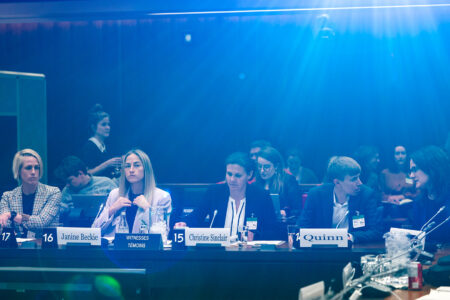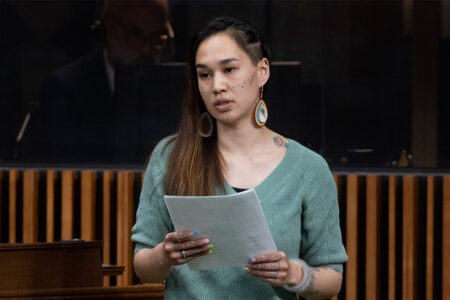
Worldwide, political advertising is a mainstay in voter outreach by political parties and candidates during elections. In Canada, federal political parties’ advertising activities during general elections have intensified and diversified greatly over the last decade. For example, the last four federal electoral campaigns have been generally marked by a rise of major political parties’ advertising expenditures. The expansion of the mass media landscape and the fragmentation of audiences have led to changes in how political ads are thought out, conceived, and delivered to the public. Political advertisers leverage the power of on and off-line media platforms and deploy different communication and engagement tactics to appeal to voters, secure and strengthen their support, as well as ensure that they turn out and vote on election day.
In Canada, political advertisers work for advertising firms that have long-standing relationships with specific political parties. Leaders of these firms – who have an expertise in the advertising of political products – tend to be aligned ideologically with the political party they work for during a campaign. Furthermore, these firms have extensive resources enabling them to provide committed services to political parties and candidates throughout electoral campaign cycle.
Political advertisers can help pinpoint and cluster together voters with shared preferences, interests, and goals. In doing so, they can isolate slices of the electorate – or “target universes” – and, in some cases, individual voters deemed likely to be receptive to and persuaded by specific genres of political appeal. Market research insights from pollsters and other public opinion specialists are instrumental for advertisers when doing this type of work. Targeting has become especially important as media consumption has grown and the public is exposed to growingly diverse content often tailored to their interests. Targeting can help political messaging cut through the noise and reach its intended audience for maximum impact.
Altering attitudes and behaviour can be viewed as one of political advertising’s core functions. Political ads can help generate, modify, or reinforce specific political attitudes (attitudinal). They can trigger emotional responses leading to shifts in feelings and moods (affective), shape voters’ thought and decision-making processes (cognitive), as well as foster changes in political behavior (behavioural).
Issue-based versus image-based advertising
Generally, political ads are either issue-based or image-based. Issue-based advertising generally provides voters with insights into political parties and candidates’ positions. This includes political and policy matters, legislative priorities, and views on issues of public interest.
Image-based advertising is used to introduce, define, and humanize candidates. It highlights personality traits, values, as well as personal and professional qualifications. It also helps to foster a more personal – and often times emotional – connection between voters and candidates.
Political parties and candidates often rely on issue-based advertising to put forth elements that will be at the core of their messaging during the campaign. Specifically, incumbent parties tend to release ads that have generally positive tone and that tout specific political and policy successes. These ads can show how these accomplishments demonstrate their governing effectiveness, have fostered progress and the betterment of society, and how these successes can be built on with re-election.
Challenger parties adopt a different approach. They frequently turn to issue-based advertising to introduce key elements of their electoral platform, which can be unknown or not well understood among some groups of voters. They can also lay out and explain their key legislative priorities. As well, they can critique, undermine and attack the achievements and the priorities of the sitting government. In other words, challenger parties can use these types of ads to highlight the weaknesses of members of the government and to portray themselves as a viable alternative.
Political advertisers can turn to image-based ads to establish, strengthen, or sharpen the public image of candidates, typically leaders of political parties. This is particularly important as politicians’ personality traits and personal lives are elements influencing how some voters make up their mind and decide whom to vote for. Specifically, party leaders with less name recognition can use these types of ads to introduce themselves to the public and highlight specific aspects of their identity. This is often done in ways complementing the priorities of their electoral program and addressing the preferences, interests, and objectives of target political markets.
Candidates with greater name recognition tend to use these ads to fine-tune or sharpen some facets of their public image. In some cases, image-based ads can help them shore up deficiencies in how they are perceived by the public and position themselves strategically in anticipation of the electoral contest.
Political parties and candidates can also turn to image-based ads to define – or brand – their opponents, often in ways that will be beneficial to them during the campaign. For example, incumbent parties can release ads raising concerns, doubts and, in some cases, fears about their challengers’ readiness or qualifications to assume the responsibilities of an elected office. Conversely, challengers can focus on controversies plaguing incumbent parties to degrade specific aspects of their public image (e.g. honesty, reliability, credibility) and instill doubts in the minds of voters. More broadly, political advertising’s main role during the pre-campaign phase is to set the stage for the political marketing efforts that will be rolled out during the campaign.
During the campaign
As the writ is drawn and the electoral campaign gets underway, political advertisers modify their approach to complement and support political parties and candidates’ voter outreach and engagement operations. The pre-campaign is dedicated to setting general political impressions among the public. During the campaign, advertisers’ activities become surgical. Advertising consultants leverage public opinion data and other forms of political market intelligence to develop and push out messages that consider the wants, needs, and aspirations of specific segments of the voting public. Their tactics need to be constantly re-thought and recalibrated to address developments on the campaign trail, shifts in public opinion, and respond to – and in some cases counter – their opponents’ policy announcements and communication efforts.
Political advertisers’ efforts are also informed by the budget provided to them by political parties. The budget covers two main types of expenses: funds for the consulting fees of political advertisers and funds covering operational costs (e.g. production and circulation of ads, organization of events). The budget can be adjusted during the campaign based on different factors. Among them include the evolution of political parties and candidates’ priorities and objectives, shifts in the campaign dynamics, and fundraising yields.
Political advertisers are instrumental in selecting which mass media platforms are to be used for sending messages addressing political or policy matters of importance to specific groups of voters. Given that the Canadian political market tends to be more homogenous than the market in other countries, particularly the United States, political advertisers use diverse mass media targeting strategies. For example, television – which tends to reach a large and geographically dispersed audience – can be used to broadcast ads with broad political appeal. These ads, which can cut across different political and policy issues and interests, are typically aired during television shows with a large viewership or at peak viewing times.
Political advertisers turn to local and regional radio stations to reach out to groups of voters likely to be receptive to messages with a narrower appeal. For instance, radio is used to circulate ads focusing on matters relevant to people sharing specific socio-demographic characteristics (e.g. language, income, ethnicity, education, religion), caring about specific policy matters (e.g. environment, immigration, culture) or located in a particular geographical area (e.g. region, postal code). Regionalism as well as linguistic and cultural identity remain core elements shaping political life in Canada.
Finally, social media channels are an integral component of the political media environment in Canada. Political advertisers leverage these digital communication platforms to push out political ads that are tailored to appeal to slices of the political market with a distinct profile (e.g. mothers, students, young professionals, immigrants). In many cases, these ads are revised versions of existing political advertisements that are more generic in nature and that have been circulated previously through other channels, including newspapers, campaign flyers, and television. They can emphasize very specific elements likely to generate a strong response among their target audiences. While this form of hypertargeting can be useful, it is less applicable in Canada than in other national contexts where the political market might be more heterogeneous.
The content and tone of political ads evolves over the course of an electoral campaign. Changes in voters’ interests in issues as well the evolution of the journalistic coverage can lead political advertisers to modify the structure and content of political ads. They do so to ensure that the messaging stays relevant and appealing to the public. Adjusting the advertising can strengthen other aspects of the political communication operations deployed by political parties and candidates.
Shifts in public support for political parties and candidates as measured by public opinion polls and fundraising data can cause political advertisers to consider adjustments to messaging and targeting. For example, during the 2019 federal election, Conservative advertisers observed that the support for the Bloc Québécois was rising (and Conservative support softening) due to a combination of factors – most notably Leader Andrew Scheer’s performance during the first French-language debate, and his initial refusal to clearly articulate his position on abortion. The Conservative team developed and rolled out French-language ads emphasizing a clear narrative: people voting for the Bloc on election day would be in effect supporting the Liberals. Ultimately, the Bloc Québécois made significant gains on election day whereas the Conservatives lost seats in Quebec. It is believed among Conservative strategists that even though many Quebecers who voted for the Bloc were unimpressed by the performance of the Liberal government led by Trudeau, political advertising was unable to overcome their concerns about the Conservative Party and its leader’s positions on certain policy issues.
The way that political advertisers approach their craft has evolved with the growth of political marketing and digital communications. They place a premium on strategic thinking to match messages, audiences and media. Much of this is familiar to campaigns past, such as using television to reach mass audiences or using image-based ads to frame how we see their opponents. To date, scholars have taken little notice of social media advertising by Canadian political parties. While many scholars have taken interest in traditional forms of political advertising in Canada, more research is needed to explore all aspects of strategic advertising in a fragmented media landscape.
This article is part of The Insider’s View Behind the Scenes of Election Campaigns special feature.











